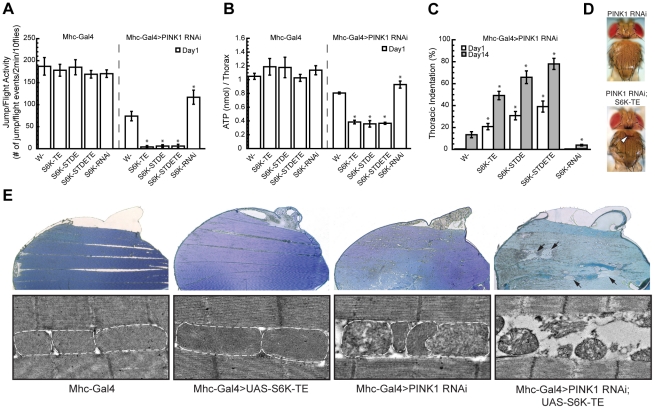Figure 2. Overexpression or knockdown of S6K strongly modifies PINK1 RNAi phenotypes in the muscle.
Overexpression of constitutively active S6Ks (S6K-TE, S6K-STDE and S6K-STDETE) in the muscle of PINK1 RNAi flies completely abolished their jump/flight ability (A), significantly decreased their muscle ATP level (B) and dramatically increased their thoracic indentation (C). In contrast, the overexpression of S6K RNAi transgene partially rescued these phenotypes in PINK1 RNAi flies. Open and closed bars represented data scored on Day 1 and Day 14 after eclosion, respectively. Data are presented as mean ± s.e.m. Significance was determined by Student's t test (*P<0.005). (D) Representative image of thoracic indentation (indicated by the white arrowhead) of Mhc-Gal4; PINK1 RNAi; S6K-TE fly at 1-day old (bottom) compared to the normal thoracic phenotype of Mhc-Gal4, PINK1 RNAi fly of the same age (top). (E) Overexpression of constitutively active S6K in PINK1 RNAi flies dramatically increased muscle degeneration. Sections from resin-embedded thoraces of 1-day-old adult flies were either stained with toluidine blue to visualize overall muscle structure (top panel) or directly visualized using TEM for mitochondrial morphology (bottom panel). WT flies or flies expressing constitutively active S6K show normal muscle structure with healthy, electron-dense mitochondria. Flies expressing PINK1 RNAi transgene had small lesions in the muscle with dysfunctional mitochondria showing broken cristae. Co-expression of S6K-TE in PINK1 RNAi flies caused more severe degeneration of mitochondria and muscle fibers, generating large lesions in the muscle that were filled with resin during embedding and are readily recognizable (indicated by black arrows).

